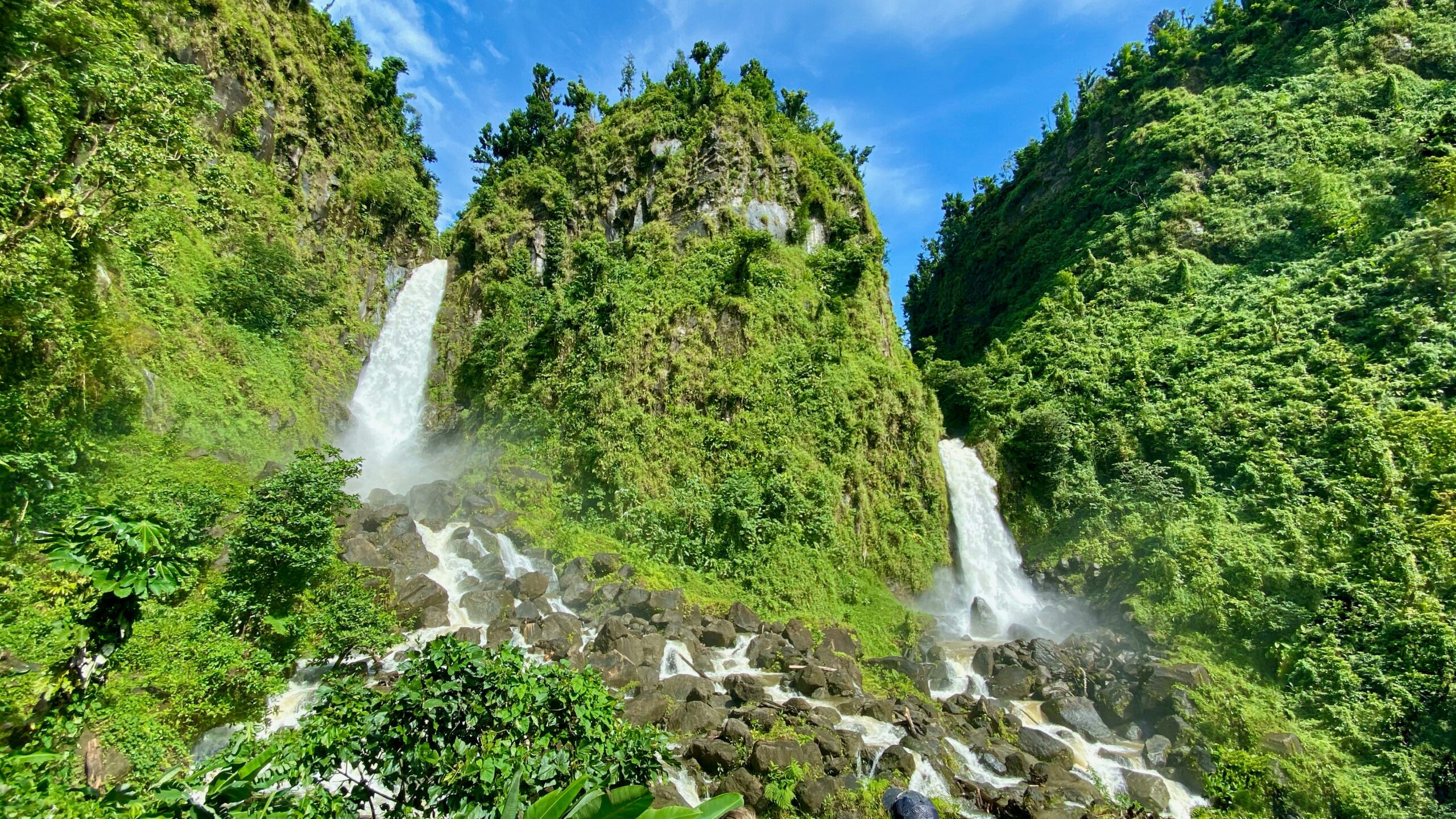Dominica’s Emancipation: A Story of Resistance, Survival and Freedom

August 1, 2025
I spent most of July in Dominica, and honestly, I’m still in awe.
No matter how many times I return, this island always takes my breath away — the lush green mountains, cascading waterfalls and misty rainforests make you feel as though you’re walking through a sacred memory. Dominica isn’t just beautiful — she’s alive. And in August, during Emancipation season, you can feel her soul speaking.
As a daughter of the soil, born in Roseau but now based in London, this time of year always pulls me home — spiritually and emotionally. It’s when we remember our story: the struggle for freedom, the strength of our ancestors, and the powerful legacy of Emancipation in Dominica.
Let me take you on a journey through our past.
Before Colonisation: The Kalinago Legacy
Long before the ships came, Dominica was known as Waitukubuli, meaning “tall is her body” — a name given by the Kalinago, the island’s Indigenous people.
These skilled navigators and warriors lived in harmony with the land and fiercely defended it from outsiders. So, when Christopher Columbus sighted the island in 1493 and named it “Dominica”, the Kalinago were not impressed — nor were they conquered.
Although Spain claimed Dominica, they never successfully colonised it. The Kalinago, and the island’s formidable terrain, ensured it remained fiercely independent.
French Colonisation and the Arrival of Slavery
In the late 1600s, French settlers began arriving from neighbouring islands like Martinique and Guadeloupe. They established plantations and brought with them enslaved Africans, forced to work on cocoa, coffee and sugar estates.
Despite a treaty signed in 1660, promising not to settle in Dominica, the French disregarded it and pushed the Kalinago eastwards — though their presence and heritage remain strong to this day.
Under French rule, Dominica developed a rich Creole culture, shaped by Catholicism, language, cuisine and plantation life — all built on the backs of enslaved African people.
British Rule and Intensified Exploitation
In 1763, following the Seven Years’ War, Dominica was formally handed over to Britain under the Treaty of Paris. With British rule came a new wave of exploitation and brutality within the plantation system.
The French briefly recaptured the island in 1778, but it was returned to Britain in 1783, where it remained under British control.
Slavery in Dominica intensified. Thousands of Africans were subjected to unimaginable cruelty. Yet Dominica also became known for something extraordinary — resistance.
Maroons, Rebellion and the Road to Emancipation
Dominica’s mountainous interior became a sanctuary for maroons — Africans who escaped slavery and built free communities deep in the forest. From these safe havens, they launched raids on plantations and provided refuge for others seeking freedom.
By the early 1800s, Dominica was unique in the British Caribbean: free Black men were allowed to vote and hold public office. It was a rare and short-lived victory, but one that made history.
As pressure grew within the British Empire to abolish slavery, enslaved people across Dominica continued to resist in every form possible — their voices, actions and defiance played a crucial role in turning the tide.
Emancipation in Dominica: From Bondage to Liberation
In 1831, Britain passed the Brown’s Act, granting civil rights to some free Black people. Then, in 1834, slavery was officially abolished across the British Empire — including Dominica.
But there was a catch.
Enslaved people were forced into an “apprenticeship system”, working without pay for their former enslavers for another four years. True freedom in Dominica was only realised in 1838.
Life After Emancipation: Land, Leadership and Legacy
In the years following emancipation, many formerly enslaved Dominicans purchased land and built independent farming communities. This led to the growth of a Black peasantry — something few other colonies achieved at the time.
Dominica also became the first British Caribbean colony to have a Black-controlled legislature, where formerly enslaved individuals could shape policy and governance.
Though Britain eventually dismantled this progress in 1865, the spirit of empowerment and self-determination never left our shores.
Emancipation Day in Dominica Today
Every year on 1st August, Dominica commemorates Emancipation Day with tributes that honour the Kalinago, the Africans, the maroons, and the everyday people who carried us forward.
The season is marked by:
- Cultural festivals in each parish and village
- Vibrant displays of madras and Creole wear
- Kalinago heritage events
- Spiritual and musical celebrations It’s not just about remembering the past — it’s about honouring the survival.
We are not just the descendants of slaves. We are the descendants of survivors, rebels, healers, warriors, farmers, and freedom-seekers.
It is a time of remembrance, pride and deep connection — not just to our past, but to the freedom we continue to defend and define.
Final Reflections: Our Living Legacy
This Emancipation season, whether you’re in Dominica or part of the diaspora, I encourage you to go deeper. Visit the Kalinago Barana Auté, walk the same mountain trails where maroons once fought for freedom, and speak to elders who still carry our stories.
Dominica’s emancipation was not a gift — it was a battle. Fought in the shadows of our rainforests, in the hearts of our people, and across centuries of resistance.
Tall is her body. Tall is her spirit. Tall is our pride.